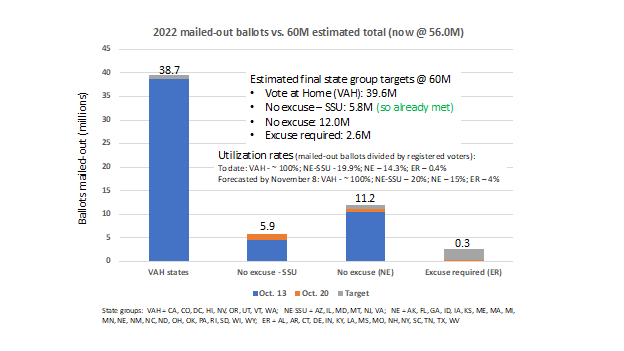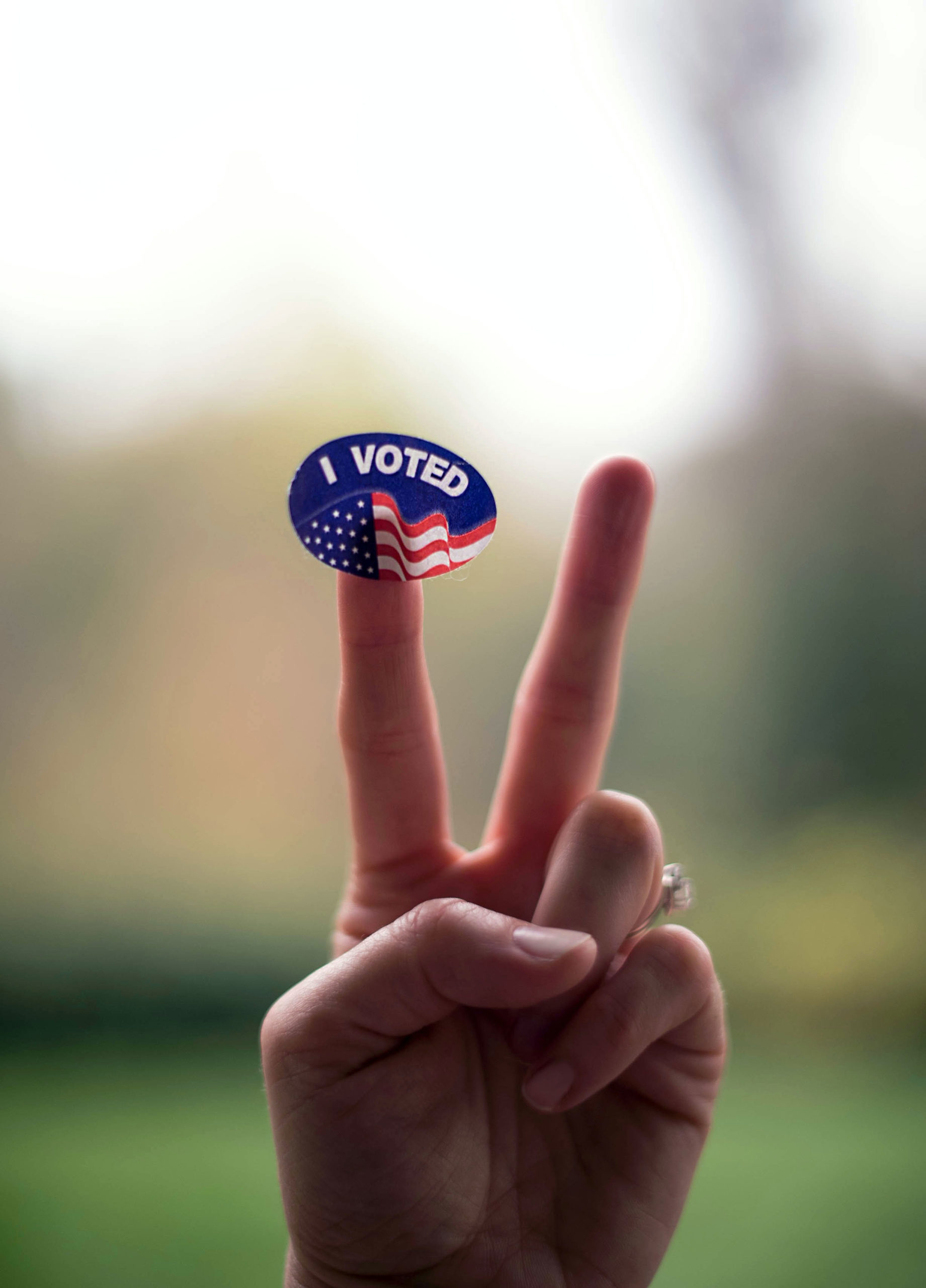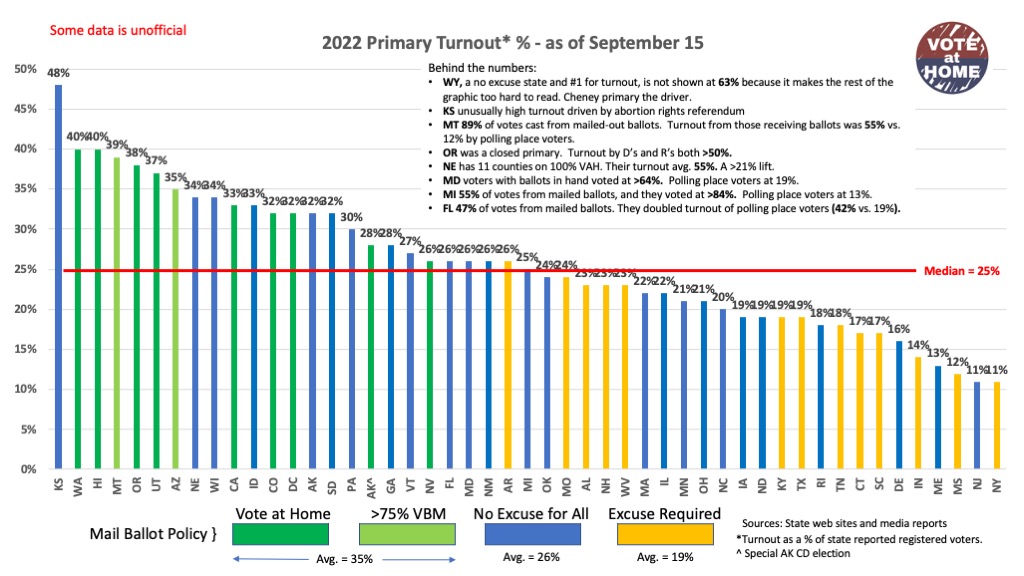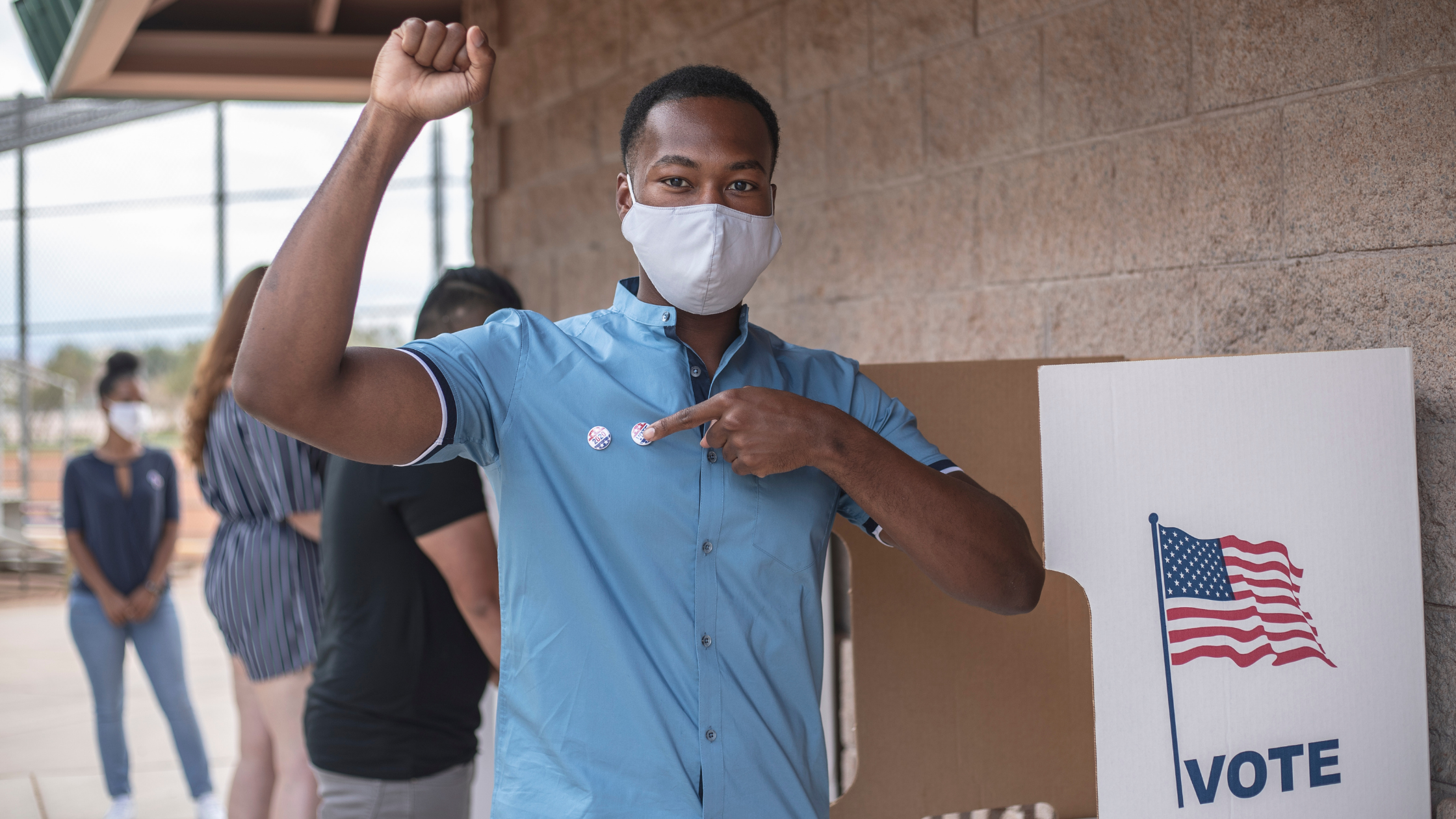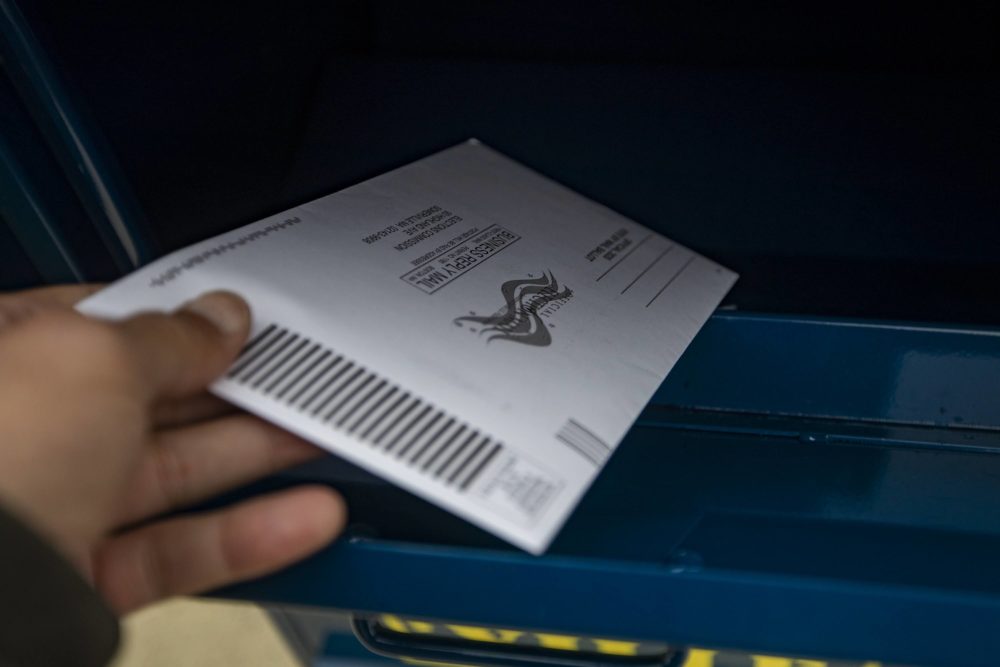October 14, 2022: Today the National Vote at Home Institute (NVAHI) launched a new tool to help journalists, legislators, elections officials and the public forecast the likely level and impact of mailed-out ballots for the 2022 general election.
Modeling Voter Participation in 2018 Midterm Election
In this research, we examine the difference between five vote-by-mail policies in place in the 2018 midterm elections. We use statistical modeling to understand the effects of different vote-by-mail policies nationwide and estimate what might have changed in 2018 based on different voting systems. In general, we find that turnout increases as states move along the vote-by-mail policy continuum, removing administrative obstacles for voters in the process. Additionally, turnout gains are largest when counties progress several steps from more restrictive policies to less restrictive policies, and the Vote at Home policy has the most potential to impact young voters.
Cost of Voting in the American States: 2022
(Election Law Journal) — A recent nonpartisan academic study that ranked all 50 states based on the amount of time, energy, and resources people must make to vote was released this week. To no surprise, of the top 10 states for ease of voting, eight are the nation’s only states conducting full vote-at-home elections in 2022, during which all voters will automatically be mailed ballots for the upcoming midterms. As for the bottom 10 states, seven require their voters to attest to a valid excuse in order to obtain a mailed-out ballot.
Mail Ballot Voters Turnout at Higher Rates than Polling Place Voters
Since 2020, mail-ballot use has been on the rise across the U.S., resulting in more voters having access to the ballot box. The 2022 primary elections were no exception.
Vote by Mail in 2020 and Our Collective Opportunity in 2022
“The 2020 elections presented unique challenges and opportunities that fueled a meteoric rise in the use of vote-by-mail (VBM). Since the 1800s, absentee ballots by mail have been part of our democracy. For most of that history, voters were typically required to provide an excuse for casting an absentee ballot. But in the 1980s, California introduced an expansive policy that opened VBM to all voters. By 2016, 27 states adopted a similar voting policy. By 2020, hastened by the COVID-19 pandemic, 34 states allowed voters to request mail ballots without providing an excuse. Deliver My Vote Education Fund (DMVEF) examined VBM trends in five key states (Florida, Michigan, Pennsylvania, Georgia, and Wisconsin) from 2016 to 2020 to understand this massive shift in VBM use. Voters of all backgrounds embraced VBM as a safe way to vote during the pandemic, while also realizing the remarkable convenience.”
Vote at Home Policy and the 2020 Presidential Election
A recent study of mail-ballot use and voter participation found that turnout increased an average of 5.6% during the 2020 presidential election in states that mailed a ballot to every registered voter. The effects of mail-ballot delivery were even greater in jurisdictions with historically low mail-ballot usage, boosting turnout by as much as 8%.
America Goes to the Polls 2020
In an historic year for voter turnout, 2020 also underscored the power and importance of mailed-out ballots. In the top 10 states for highest turnout among eligible voters, half are full vote-at-home states. The remaining five states implemented same-day registration and put temporary policies in place making it easier to access a mail ballot. Conversely, the bottom 10 states cut off voter registration four weeks before Election Day and enforced excuse requirements for mail ballots.
Does Voting by Mail Increase Fraud? Estimating the Change in Reported Voter Fraud When States Switch to Elections By Mail
U.S. voters recently participated in the 2020 general election, which determined the next president as well as other public officials at the federal, state, and local level. While Election Day was officially Tuesday, November 3, many voters cast their ballots early—either in person or by mail. This article examines the claim that states can expect more cases of voter fraud when ballots are distributed by mail. It does not consider the consequences of early in-person voting or other challenges facing voting by mail, such as the timeliness of the U.S. Postal Service or the reporting of election results. Nor does it consider whether voters are more likely to incorrectly mark their ballots or whether election workers are more likely to incorrectly reject ballot.
The participatory and partisan impacts of mandatory vote-by-mail
Policy-makers disagree on the merits of mandatory vote-by-mail. Many of these debates hinge on whether mandatory vote-by-mail advantages one political party over the other. Using a unique pairing of historical county-level data that covers the past three decades and more than 40 million voting records from the two states that have conducted a staggered rollout of mandatory vote-by-mail (Washington and Utah), researchers used several methods for causal inference to show that mandatory vote-by-mail slightly increases voter turnout but has no effect on election outcomes at various levels of government. Their results find meaning given contemporary debates about the merits of mandatory vote-by-mail. Mandatory vote-by-mail ensures that citizens are given a safe means of casting their ballot while simultaneously not advantaging one political party over the other.
Participatory and Partisan Impacts of Mandatory Vote at Home
This research explores the effect of vote-by-mail on electoral outcomes by using historical nationwide county-level data between 1992-2018 as well as 40 million individual-level voter records from Washington and Utah – both full vote-at-home states. The research finds a positive effect on turnout, with no discernable partisan advantage.

